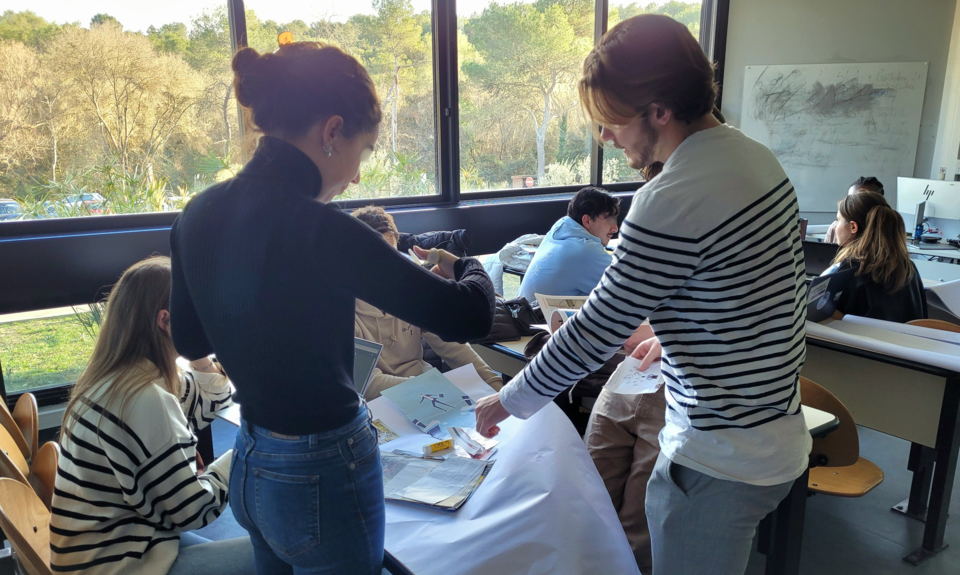Grande Ecole students are used to working on complex problems in no time using high-tech products such as their laptops or mobile phones. But what happens if you remove these technologies, giving them a pair of scissors, pens, paper, and old magazines? Will they still be effective in solving complex problems? The following article explores how the collage method can help SKEMA students (re-)gain creativity in their work.
“What is the purpose of this exercise?”, “Why do we have to work with this?”, “Can we not use our laptops for the same purpose?” As you can see, our first challenge was to convince SKEMA PGE L3 students to put their laptops (or mobile phones) aside and work with (seemingly) preschool methods such as scissors, pens, paper, and magazines.
The task was to create a buyer persona and a potential customer journey map from scratch using (old) brainstorming techniques. How would potential customers of a specific product and brand look like? What are their hobbies, interests, lifestyles, and usage situations? Could you think of a potential story of how consumers get to the idea of selecting the product, buying it, using it, and telling others about their experiences? While some students loved the idea of putting laptops aside and working exclusively with a pencil and pen on paper, others had serious difficulties with this “new” method. “We are not creative”, some students complained. “How can we work on creative situations if we are not creative?”, some teams asked. Well, this was precisely one of the purposes of the exercise…
Gen Z students out of their comfort zone
Collage methods are known for encouraging creativity. As an arts-based approach, collage is gaining stature as a research methodology in many disciplines, including education (Gerstenblatt, 2013). Taking its name from the French word ‘coller’ (‘to glue’ or ‘to stick together’), collage generally refers to two-dimensional works created through an assemblage of different materials. Such methods can be helpful in addressing important questions in social sciences, as they allow participants to reflect and create meaning out of their experiences (Roberts and Woods, 2018). In addition, a collage has the potential to trigger “shock and surprise” (Burge et al., 2016, p. 735), which contributes to putting students out of their comfort zone.
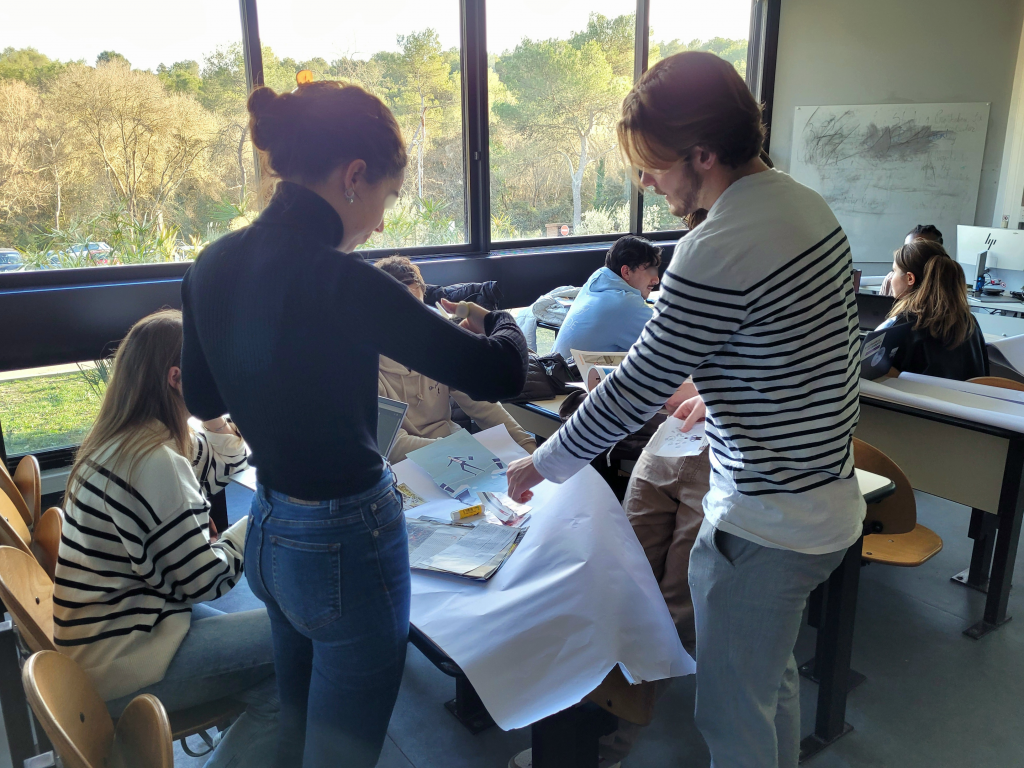
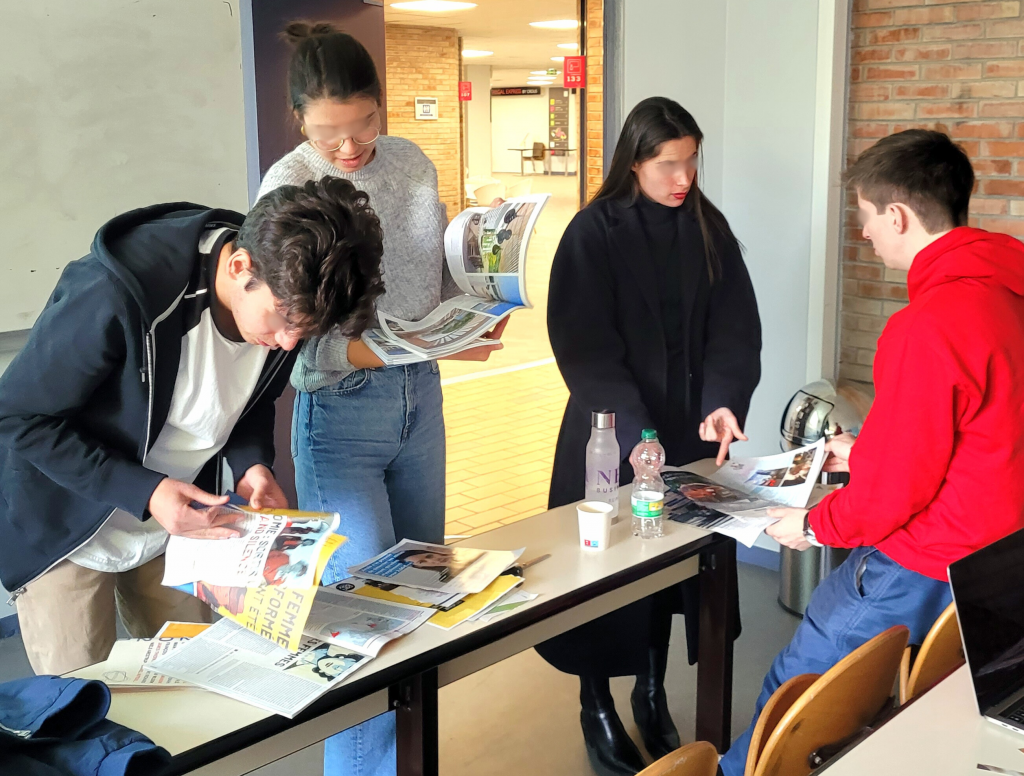
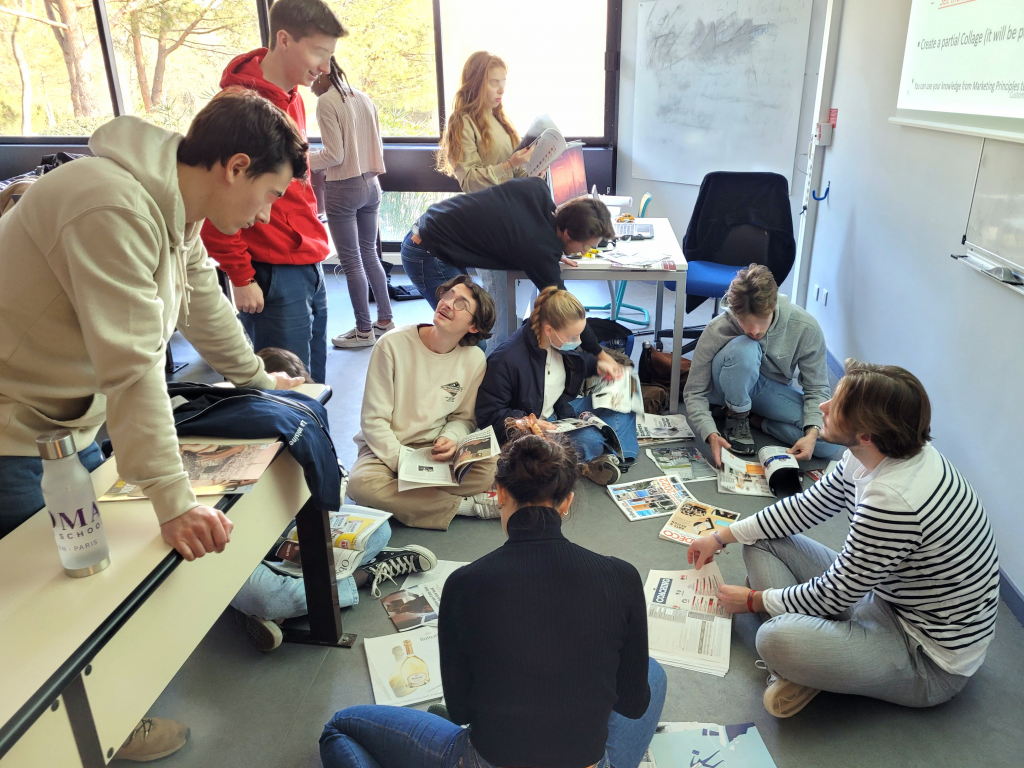
The growing use of technology in our daily lives, let’s say high-tech devices, social media, and generative AI, creates an “ocularcentric” culture (Mitchell, 2011), where images shape how we see ourselves, how we see others, and how others see us (Mannay et al., 2018). The use of a collage aligns with this culture and brings to the classroom a new perspective that captures subtle aspects of our experiences and feelings in a more creative way (Roberts and Woods, 2018). SKEMA students are already too familiar with conventional methods such as Word, Excel, or PowerPoint presentations. Therefore, an unfamiliar arts-based method of representation can offer the opportunity to pause for thought, ponder, hesitate, and examine assumptions “instead of repeating familiar viewpoints or quickly coming to settled conclusions” (Burge et al., 2016, p. 734).
Don’t be afraid to be a different student
So, what is a “good” collage? Which materials did we use? What is recommended? In general, students had to choose the materials they were using. While we provided them with some colorful pens, paper, and exemplary newspapers and magazines, they were asked to bring the material they assumed would be relevant to the task. Good collages were created when students allowed themselves to dive into the activity. In other words, when students were not concerned about being seen as “playful children”, they captured the essence of the exercise and produced great work. On the other hand, when students had the “this-is-not-a-grown-up-activity” attitude from the start, the collages were less rich and less interesting (both from the learning experience and pedagogical perspectives).
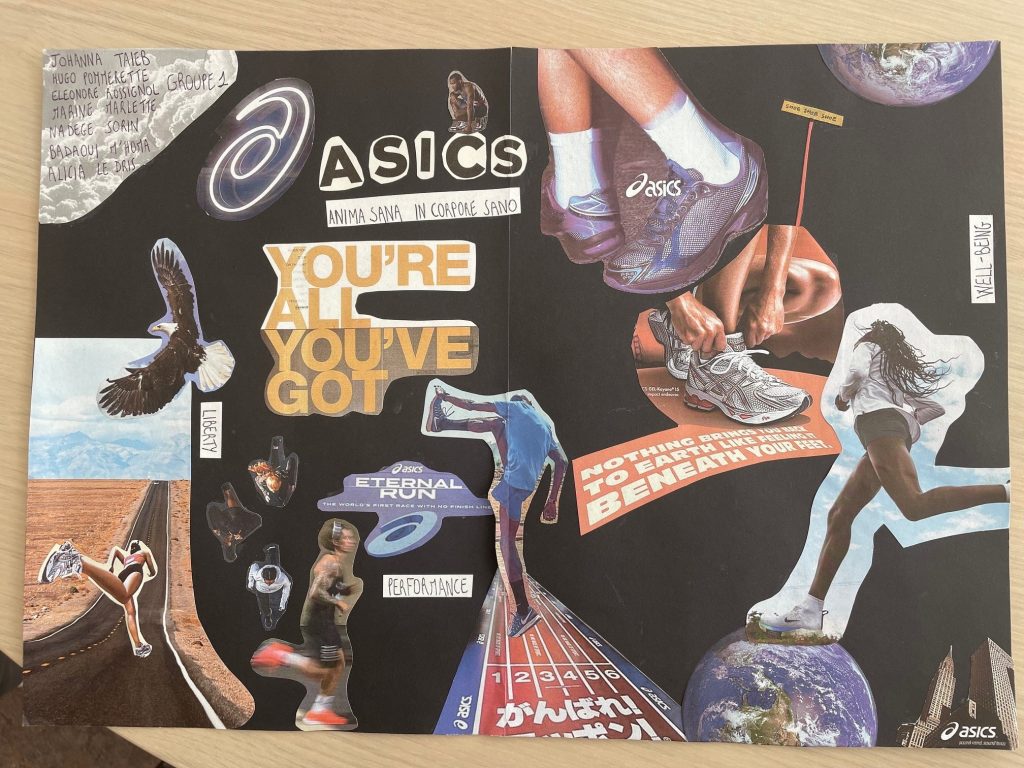
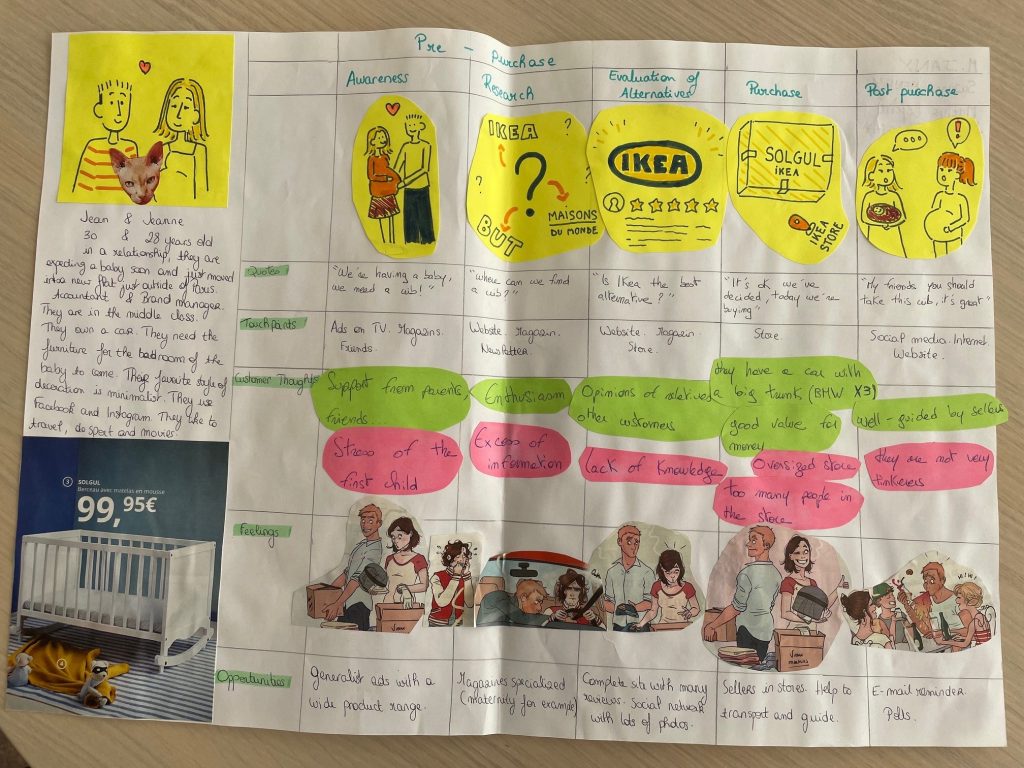
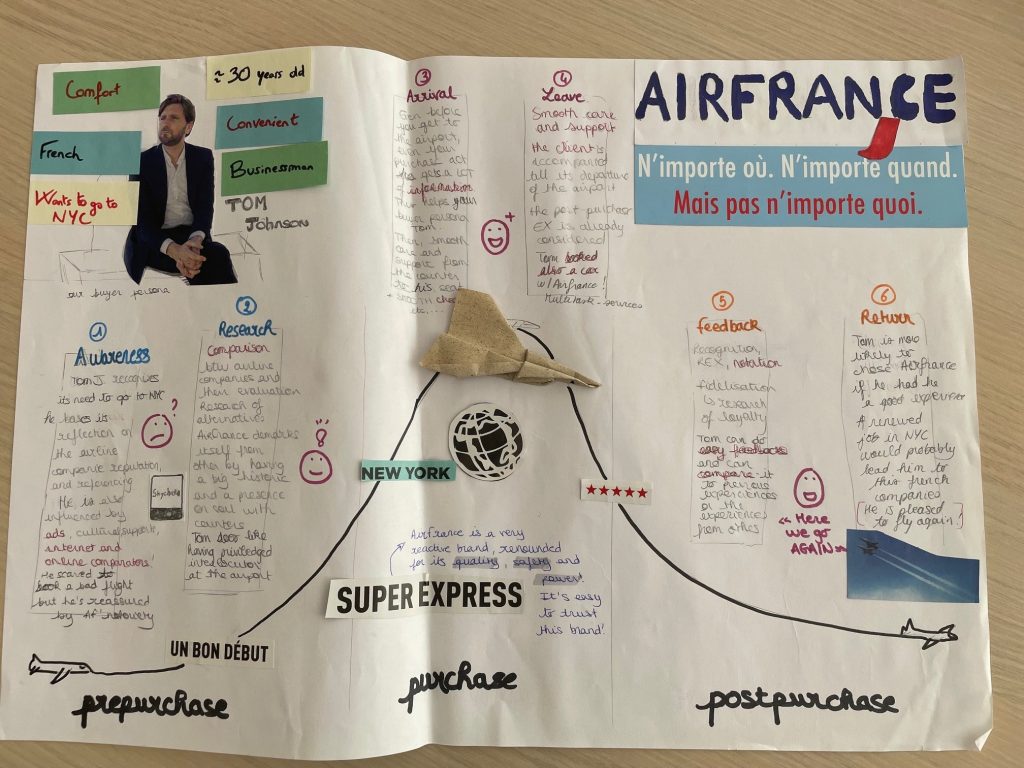

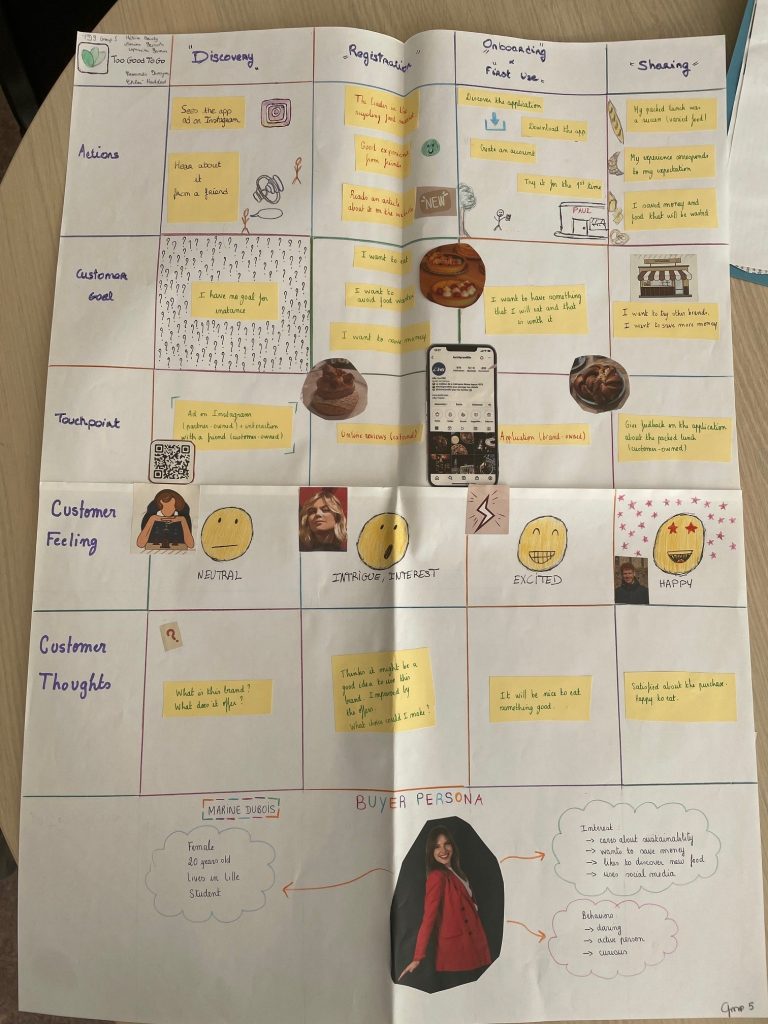
Based on students’ feedback, this is what we have learned from our first approach:
- Clearly outline before students start working on the task the purpose of the (collage) method. In contrast to other more conventional methods, it is not clear to students why they should use a collage method and what the principal benefits of such a method are.
- Provide all of the materials for working on the collage in class, the “collage box”. We have asked students to bring some of the materials, with mixed results. Providing all of the materials would have facilitated working on the collage in class.
- Clearly link the collage to other assignments in the course. For example, you could tell students that their project has three phases, and that the collage method would be used in the first phase as a brainstorming tool.
- Avoid repetition of tasks. If students worked on the collage, they should not work on similar elements using online tools, for example.
- Make the collage available to students. If they have to work on other assignments based on the collage, it should be accessible to students later on for related work.
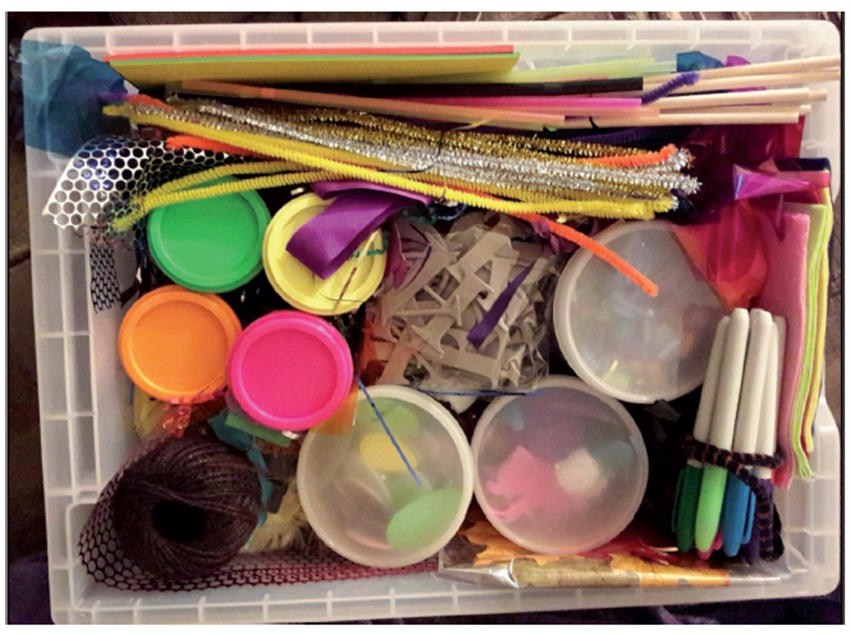
Figure: Suggested collage box (Culshaw, 2019)
Overall, we enjoyed using the collage method in our course, but due to its complexity and the organization of the material required, we believe it might be less advantageous for a typical SKEMA multi-campus core course. Ideally, the audience for this kind of approach would be more targeted, such as in elective courses, or more senior and/or experienced students, as in graduate and/or MBA classes. They should not be afraid of “looking young”. Also, teachers could benefit from specific training on how to teach and moderate discussions using the collage method. Students and teachers alike can sometimes benefit from a return to the roots.


